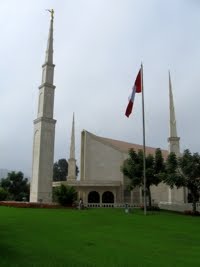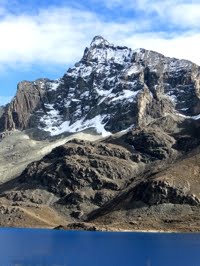 Beverly started her MTC training this week. Her tutor is Katie, a young BYU coed who served her mission in Texas (Spanish speaking). Beverly is learning Spanish pronunciation and how to read in Spanish. She's also developing a basic vocabulary. I don't think she's started conjugating verbs yet, but that will come.
Beverly started her MTC training this week. Her tutor is Katie, a young BYU coed who served her mission in Texas (Spanish speaking). Beverly is learning Spanish pronunciation and how to read in Spanish. She's also developing a basic vocabulary. I don't think she's started conjugating verbs yet, but that will come.For dinner the other night, Beverly gave a blessing on the food. Before giving the prayer, she said, "I hope God won't mind if I read the prayer." So she started the prayer. All went okay until she started flipping pages in her "Spanish task book" so that she could use a variety of phrases. I did all I could to keep from laughing. My response afterwards was, "I think God forgave you for reading the prayer, but I'm not sure He forgave you for flipping pages!" The prayer was great. Beverly is making excellent progress.
Earlier in the week, I gave the first half of the first discussion in Spanish. Rodrigo said I did an fine job with good Spanish grammar and vocabulary. But then today, he "modeled" part of a discussion--as a way of teaching me how it should be done--without actually telling me what I had done wrong. Reading between the lines, I knew what he was saying: "Elder, make your discussion more relaxed, more personal." After watching his model, I could see that I was too formal and tried too hard to follow the lesson plan from Preaching My Gospel. I need to relax and carry on a conversation, more in my own words. Now I just need to develop more of "my own words" in Spanish.










